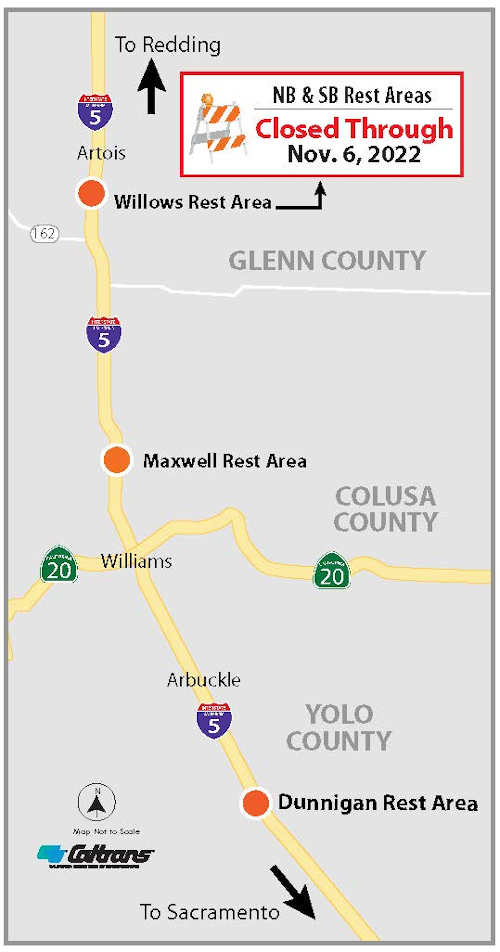- Elizabeth Larson
- Posted On
State announces funding to support sustainable and resilient regional economies across California
As part of CERF’s initial planning phase, 13 economic development entities known as High Road Transition Collaboratives will receive $5 million each to develop roadmaps, including a strategy and recommended series of investments, for their region.
Following this planning phase, the program’s implementation phase will begin in 2023 and provide $500 million to fund projects identified by the High Road Transition Collaboratives.
High Road Transition Collaboratives represent California’s 13 distinct regional economies and bring together diverse community, labor, industry, and business interests.
The announcement includes 11 of the 13 awardees. Awardees were selected through a competitive bidding process based on their readiness and commitment to conduct inclusive planning processes that engage various community groups, including voices that have been traditionally left out of economic planning.
CERF was created by Senate Bill 162 and is administered by an interagency leadership team that includes the Governor’s Office of Planning and Research, the Governor’s Office of Business and Economic Development, and the Labor & Workforce Development Agency.
“We have an incredible opportunity to harness once-in-a-generation Federal and State investments to build a low carbon economy that creates good-paying jobs,” said Samuel Assefa, director of the Office of Planning and Research. “We are thrilled to announce the CERF Planning Phase partnerships with organizations representing labor, community, business, and industry leaders to chart an inclusive and equitable economic future for all Californians.”
“This announcement signifies a major step forward in economic development, as regional coalitions have come together across California ready to roll up their sleeves and build regional economic development strategies that will create more inclusive and vibrant economies built on a foundation of equity,” said Dee Dee Myers, senior advisor to Gov. Newsom and director of the Governor’s Office of Business & Economic Development. “As California and our federal partners work collaboratively to make significant investments to support local economies, these High Road Transition Collaboratives will play a major part in guiding these dollars to ensure the greatest impact for all Californians.”
“This first-of-its-kind state investment recognizes that California is an ecosystem of diverse economies, each of which has its own challenges and opportunities,” said Natalie Palugyai, secretary of the California Labor & Workforce Development Agency. “By empowering regions to develop the blueprints for their own futures – and requiring that they do so in a manner that is inclusive and equitable – CERF is changing the way California views economic planning.”
High Road Transition Collaboratives - Planning Phase Awardees:
North State
Fiscal agent: North State Planning and Development Collective – Chico State Enterprises
Regional convener: Partnership between Sierra Institute for Community and Environment And North State Planning and Development Collective – Chico State Enterprises
Sacramento
Fiscal agent and regional convener: Valley Vision Inc.
Redwood Coast
Fiscal agent: Arcata Economic Development Corporation
Regional convener: California Center for Rural Policy at CalPoly Humboldt
Bay Area
Fiscal agent: Bay Area Good Jobs Partnership for Equity, with the San Francisco Office of Economic and Workforce Development as the fiscal lead
Regional convener: All Home
Northern San Joaquin Valley
Fiscal agent: Merced Community College District
Regional convener: County of Merced, Department of Workforce Investment
Eastern Sierra
Fiscal agent and regional convener: Sierra Business Council
Central San Joaquin Valley
Fiscal agent and regional convener: Central Valley Community Foundation
Orange County
Fiscal agent: Charitable Ventures of Orange County
Regional convener: Orange County Business Council
Los Angeles County
Fiscal agent: California Community Foundation
Regional convener: The Economic Development Corporation of Los Angeles County
Kern County
Fiscal agent: Kern Community College District
Regional convener: Kern Coalition, a partnership between Better Bakersfield and Boundless Kern, Community Action Partnership of Kern, Kern Inyo and Mono Central Labor Council, Building Healthy Communities, and Kern Community College District
Central Coast
Fiscal agent: Economic Development Collaborative
Regional convener: Regional Economic Action Coalition (REACH)
In response to the economic impacts of the COVID-19 pandemic, Governor Gavin Newsom’s 2021-22 Budget included $600 million for CERF to ensure that California’s economy creates high-quality, family-supporting jobs, advances California’s climate agenda, and helps the state’s industries to build long term resilience against climate-caused and other economic disruptions.



 How to resolve AdBlock issue?
How to resolve AdBlock issue? 




